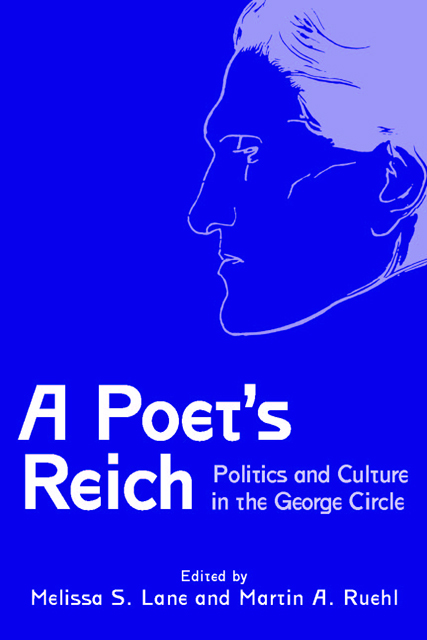2 - Stefan George’s Homoerotic Erlösungsreligion, 1891–1907
Published online by Cambridge University Press: 10 February 2023
Summary
“Gestern Sagte Der M[eister] zu mir, ich sei noch frei wie ein Vogel, da ich noch nicht 16 Jahre sei. Meine Pflicht sei nur, hübsch auszusehen und nett zu sein,” Karl Josef Partsch wrote in his diary on 9 February 1930. Partsch seemed to worry little about George’s appreciation of youthful male beauty. Not so Cyril Scott, who found it difficult to cope with George’s affections. Maximilian Kronberger also expressed misgivings, even if he failed to register the homoerotic nature of the relationship. Hugo von Hofmannsthal, however, recognized George’s attentions for what they partly were, though a word for the proclivity did not emerge in correspondence.
Until recently, homoeroticism received scant attention from George scholars; where it appears, George’s desire is seen more as a function of his relationships within the Circle, less as an element of self-identification. Robert Norton’s biography examines the homosexual nature of some of George’s personal relationships. Norton reads Ernst Glöckner’s letters, for example, most literally to support the assertion that George did indeed have sex with some of his followers. Thomas Karlauf regards George’s sexuality as a challenge, an obstacle, a thing to be transcended. Only then could the carnal yield to the spiritual. Whether they see it as sublimated or acted on, these biographers understand George’s desire as operating in semiprivate, in certain confidence, and almost exclusively within the Circle. But desire for men, or the way George chose to represent it, was an integral part of the poet’s carefully crafted public persona.
In the early years of the twentieth century, George became a hero to proponents of homosexual emancipation. None of them entered the Circle, but they applauded him from afar. Members of the Gemeinschaft der Eigenen, a group of a few hundred homosexually inclined aesthetes, praised George in print for his Neoplatonic, homoerotic project, a move that Marita Keilson-Lauritz sees as illustrative of the simple fact that “even if George would never have called himself ‘a homosexual,’ the main subject of his texts is love of men and boys.” “Everyone who knows anything about Stefan George knows perfectly well that he was a homosexual,” wrote Cyril Scott, “the incense-swinging, adulated attempts to gloss over a well-known constitutional fact in his personality can’t fool anyone.
- Type
- Chapter
- Information
- A Poet's ReichPolitics and Culture in the George Circle, pp. 37 - 55Publisher: Boydell & BrewerPrint publication year: 2011
- 1
- Cited by



